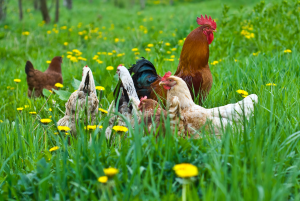I have been receiving a lot of emails from people asking about how to start a poultry farming project in Zimbabwe. Iam going to be running a series of articles to give you a background about chicken farming so that when you engage my consulting team, you will focus on the right questions. All the general questions will be answered in this series of blog posts. This post will be about the history of Poultry Farming not only in Zimbabwe but the world over. I felt it may also act as a motivator. I have also written some articles on poultry which can be found by following these links.
How to run a successful poultry business in Zimbabwe Part 2
How to run a successful poultry business in Zimbabwe Part 1
Enough about that! There are estimated to be over 30 billion chickens on planet earth. By chickens, I mean Gallus gallus domesticus which is the domesticated subspecies of the red jungle fowl. I do not want to bore you with a lot of heuristics.
Fast forward to the present day! How did the chicken achieve such cultural and culinary dominance? It is surprising to note that archaeologists believe chickens were first domesticated not for eating but for cockfighting. The chicken was the first domesticated animal, the first bird—and consequently, the first descendant of the dinosaurs—thus honored. If you are to look at chicken genome map, you will see how chickens have been altered by domestication. I have also witnessed how my grandmother transformed a broiler into a hybrid roddie by free ranching it little by little. In a project led by Sweden’s Uppsala University, Zody and his colleagues have been researching the differences between the red jungle fowl and its barnyard descendants, including “layers” (breeds raised to produce prodigious amounts of eggs) and “broilers” (breeds that are plump and meaty). The researchers found important mutations in a gene designated TBC1D1, which regulates glucose metabolism. In the human genome, mutations in this gene have been associated with obesity, but it’s a positive trait in a creature destined for the dinner table. Another mutation that resulted from selective breeding is in the TSHR (thyroid-stimulating hormone receptor) gene. In wild animals this gene coordinates reproduction with day length, confining breeding to specific seasons. The mutation disabling this gene enables chickens to breed—and lay eggs—all year long.
What is the point of this heuristics? Chickens mutate to the environment and their growth can largely be attributable to how the environment they live in can be artificialized to bring the desired result that is increase or reduce fat, make them meaty, reduce stress amongst other desired factors. In simple terms, things to do with lighting, space, temperature and humidity can become key. Of course total mutation occurs after a lengthy period of time. Let’s move on. When did chickens arrive on the continent?
Chickens arrived in Egypt some 250 after they had been domesticated in Asia but as fighting birds and additions to exotic menageries. Artistic depictions of the bird adorned royal tombs. I bet you have seen birds’ engravements inside pyramids in movies with Egyptian settings. Yet it would be another 1,000 years before the bird became a popular commodity among ordinary Egyptians. It was in that era that Egyptians mastered the technique of artificial incubation, which freed hens to put their time to better use by laying more eggs. This was no easy matter. Most chicken eggs will hatch in three weeks, but only if the temperature is kept constant at around 99 to 105 degrees Fahrenheit and the relative humidity stays close to 55 percent, increasing in the last few days of incubation. Let’s save this for another post.
Chickens are outgoing omnivores preferring to live together in flocks with a communal approach to breeding. In the wild, they often scratch at the soil to search for seeds, insects and even larger animals such as lizards, small snakes or young mice. Although commercial chickens in Zimbabwe are slaughtered in 6 weeks, chickens may live for five to ten years, depending on the breed. The world’s oldest chicken, a hen, died of heart failure at the age of 16 according to Guinness World Records.





Thank you ZimInvestors. May you please roll out the detailed manual for Free Range Chickens farming the same way you did for Potatoes & Rabbits.
I am on a serious organic farm project with attainable targets of 1,000 chickens, 1,000 Guinea Fowls and 50 goats by December 2016. What will make this thing a success is the acquisition of the following:-
1. a 2ton truck
2. incubator
3. water pump
4. solar panels, invertors and batteries
5. water tanks
Fowl runs have been built so far with the breeding stock available at the farm also.
We are requesting you to post an article on windmill water pumping system.
Regards,
hello quants i would love for you to contact me
I would like to know when is the next training for broiler keeping done and how long does it take and how much does it cost. Thank you.